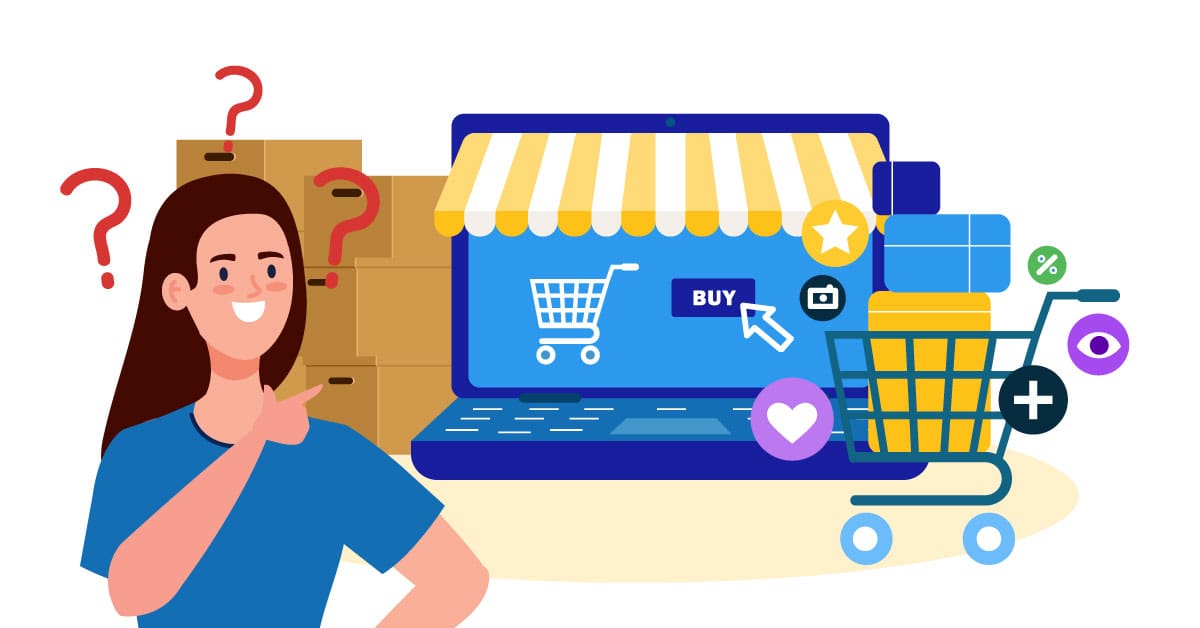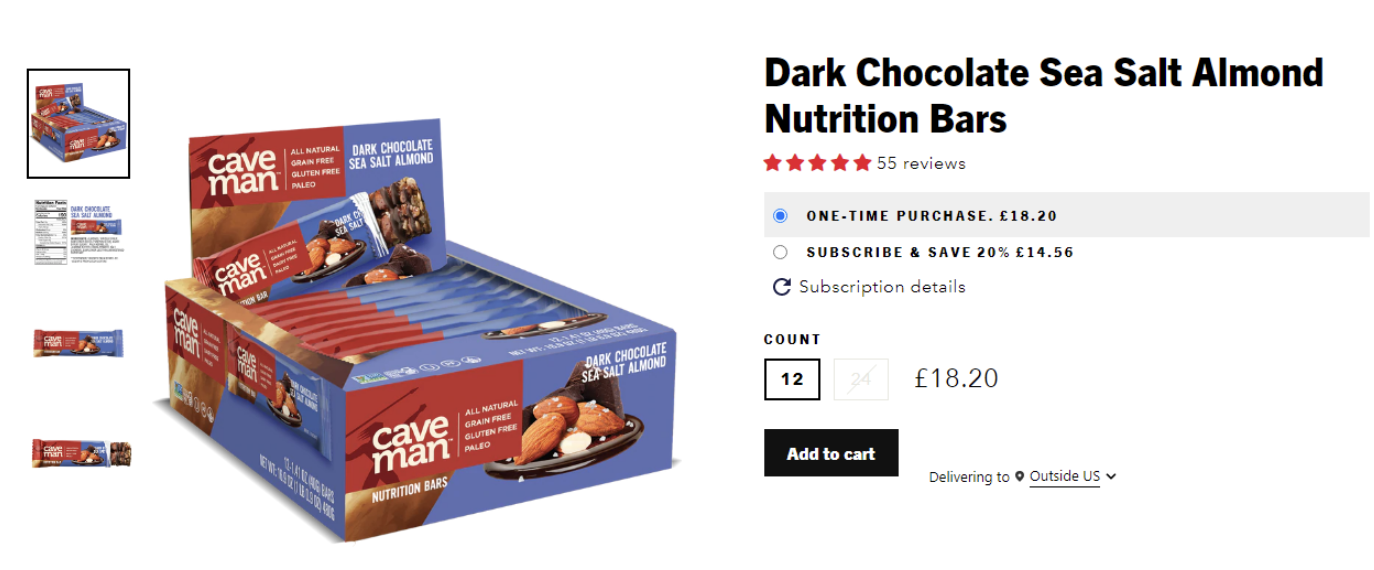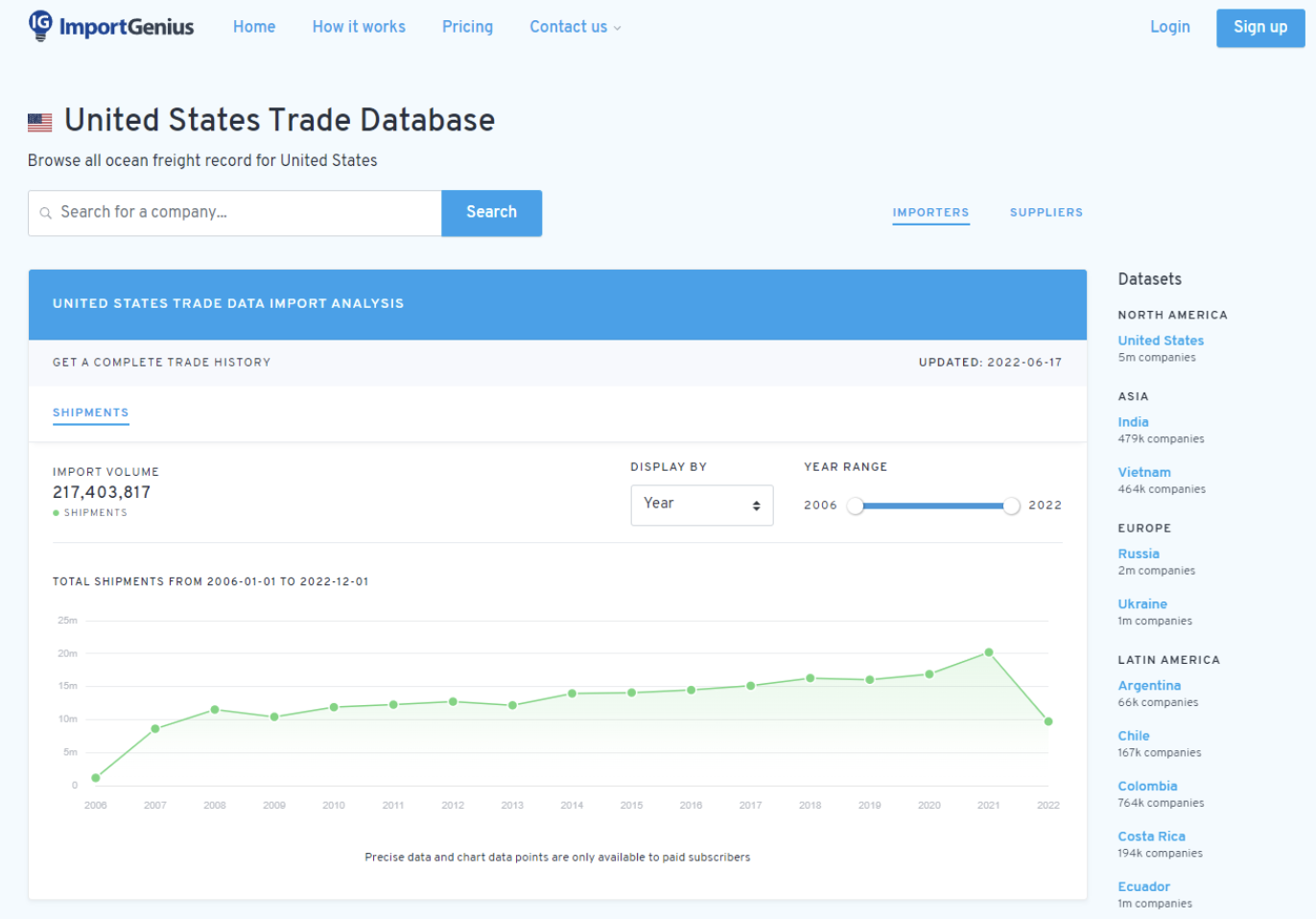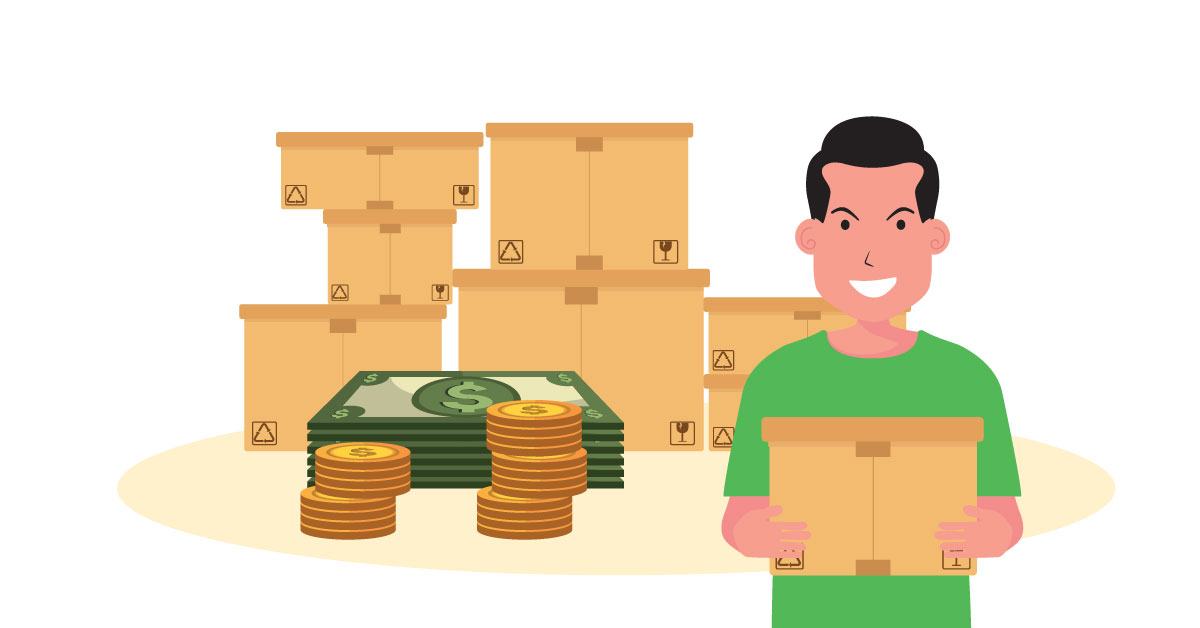
What MOQ Means for eCommerce Sellers and Using It to Your Advantage

If you work with suppliers or buy stock from manufacturers, you probably have experience with minimum order quantities (MOQs).
eCommerce sellers are often faced with MOQs when working with suppliers. Whether ordering boxes for shipments or restocking your product lines, suppliers often set MOQs you need to reach before ordering.
However minimum order quantities aren’t only reserved for supplier-seller relationships? You could set a MOQ for your customers too. Setting a MOQ for your eCommerce products could boost average order values, present wholesale opportunities, and get slow-stock moving.
Discover how you can use MOQs to your advantage as an eCommerce seller from both a supplier-seller and a seller-customer perspective.
What is MOQ?
The abbreviation MOQ stands for minimum order quantity. It’s the minimum number of units someone has to buy before they can complete their order.
As an eCommerce seller, this could be the MOQ you need to work with suppliers or it may be the MOQ you require from customers before they buy certain products. For example, your supplier might request that you purchase a minimum of 10 units when ordering.
The set MOQ could be applied to one product line or, in some cases, it could be redeemable against a variety of products. In the latter scenario, this is known as a minimum order value (MOV).
MOQs may be a set number based on units or price. Alternatively, MOQ may work on a tiered system whereby the more products you order, the more money you save.
You may set a MOQ of 10 units for one of your products but offer a percentage-based discount in increments of 50 units. So, buying 50 items would offer a cheaper cost-per-unit than buying 10 items.
eCommerce sellers can use MOQs to take advantage of buying products at scale. After all, the cost of mass-producing something is usually far cheaper than just producing one unit.
Setting product MOQs could also increase cart value. If your products have small profit margins, MOQs could ensure customer orders cover the product costs and provide healthier profit margins.
From a supplier-seller perspective, buying inventory items in bulk could reduce your individual product costs. MOQs can be a powerful tool for eCommerce sellers, as long as you know how to use them.
What MOQ means for eCommerce sellers
Setting a MOQ could be a game-changer for your eCommerce business. The most notable advantages of having a MOQ are that they offer a better price per unit and could result in an increased average order value.
Yet, that isn’t the only way MOQ impacts your business. As an eCommerce seller, MOQs can change the course of your business in more ways than one — making it more efficient and cost-effective.
On the other hand, complying with a MOQ from suppliers could result in higher up-front costs and a need for increased inventory space. Expecting customers to meet MOQ requirements could also turn some customers away if they only intend to buy one unit.
There are a lot of factors to consider when using MOQs as an eCommerce seller.
Here are some ways having a MOQ could impact your eCommerce business.
Supplier impact
MOQs could influence which suppliers you order from as an eCommerce seller.
You might have to be more selective about your chosen suppliers if your eCommerce business has a limited budget for inventory purchases. ECommerce sellers with limited funds may be limited to working with suppliers that don’t have any MOQ requirements.
One way to get around the financial limitations associated with MOQs is to pass the MOQ on to your customers. Encouraging customers to buy products in larger quantities could make it easier for you to buy larger MOQs from your suppliers.
Let’s say you sell stationery products. If your supplier requires a MOQ of 100 units for pencils, you could pass this on to your customers by setting a MOQ of five units for those pencils. Therefore, you only need 20 orders to meet the supplier MOQ as opposed to 100 orders without a MOQ.
MOQs may impact the suppliers you have access to. By being smart and passing the MOQs onto customers, you could gain access to better supplier MOQs and open up the pool of suppliers you could work with.
Average order value
Establishing an MOQ strategy for your online store could encourage higher average order values (AOV). Rather than buying just one or two products, customers will buy a product in larger quantities and, as such, your AOV will increase.
For instance, a DTC drinks brand might choose to sell cans of soda at a MOQ of 12 units per order. This would encourage a higher AOV as consumers will buy a set of 12 cans at once, rather than a single can.
Increasing your average order value will also help offset the cost of packing and shipping orders, making this a double advantage of using MOQs.
Retail and wholesale partnerships
If your eCommerce store has only ever worked on a direct-to-consumer basis, setting MOQs introduces the potential to establish strong retail and wholesale partnerships. This diversifies your store earnings by adding another arm to your eCommerce business. Plus, it will offer greater brand visibility as you get your product on more shelves, marketplaces, and eCommerce stores.
You could set up a wholesale area on your eCommerce site where retail partners and wholesalers can access exclusive discounts when purchasing set MOQs. You can use this strategy to get your products into more sales channels.
When setting MOQs for new retail partners, offer an introductory MOQ that is lower for their first order. This helps secure new retailers and wholesalers by allowing them to test product performance with less risk.
Adding a wholesale channel to your eCommerce business will allow you to sell products at larger volumes. While this may come at a discounted rate, the increased volume will mean more money in your pocket.
If you sell products to wholesalers for $10 per unit when they buy a minimum of 100 units, you would make $1,000 in one wholesale order.
Compare this to selling the same product direct to consumers for $20. The end customer may only want to buy one unit at a time, which would mean you would need to secure 20 orders. But you don’t know how long it will take to secure those 20 orders.
The wholesale route offers greater control over product inventory and supply. This allows you to sell more products at once to receive a cash injection into your business.
Be mindful of product costs when calculating MOQs for retail partners and wholesalers. Make sure you are not selling products at a loss by calculating costs of goods (COGS), inventory costs, demand, and the break-even point.
Bulk orders
Incentivize customers to buy higher product quantities by offering bulk order discounts. Offering bulk purchase discounts when customers buy higher quantities will also encourage larger order values making this a win-win strategy.
Presenting customers with multi-buy offers, bulk order options, and bundles is a smart way to introduce MOQs to your online store, without stating the obvious that it is a MOQ. Instead of seeing a product with a label that states “you must buy 10 units to order this item”, customers will see products that are already packaged up as a multi-buy offer.
A great example of this is Caveman Foods, which offers nutrition bars in pre-determined bundles. There is no option to buy a single bar. Therefore, customers have to buy the MOQ of 12 if they want to place an order.
Present multi-buy options as a way customers can save money. Offering a 20% discount when buying in bulk may be enough to incentivize customers to buy products with MOQs.
After all, your customers will get more products for their money, and you get more money from your customers.
Slow-moving stock
Breathe new life into slow-moving SKUs by adding enticing MOQ offers.
Every retailer likely has some product lines that didn’t perform as expected. You launched a new product confident it would rake in sales and then … nothing. If you have products gathering dust as they sit on your warehouse shelves, you could use MOQs to sell those SKUs and create space for new products.
Using MOQs to sell products at a reduced price will be far more cost-effective for your eCommerce store than paying to keep those products in inventory.
Set up a promotional MOQ for retail partners and wholesalers as a way to clear this slow-moving stock. The wholesaler may sell these products easier due to having a better product-market fit. In this case, you both win as you get to move dead stock and they get great new products at a reduced rate.
Alternatively, you could set a customer-facing MOQ to encourage customers to buy the product in bulk and save money. This works best if your product is a slow-mover due to being something people tend to bulk-buy.
For example, a coffee brand might find some of their coffee filters don’t sell very often because people prefer to buy in bulk. Adding a MOQ to your coffee filter products will entice people to look toward you for bulk purchase savings. You get to clear your slow-moving products and your customers get to stock their cupboards.
Consider the reasons behind slow-moving stock when deciding whether to go down the wholesaler or customer route. A wholesale partnership may be your best option if stagnated stock is due to the product not being a good market fit for your store.
Warehousing space
Working with MOQs means you will need more storage space for your inventory. Whether buying large MOQs from suppliers or planning to sell MOQ products to customers and retail partners, your inventory management process needs to be well-optimized.
Your inventory levels will naturally be high when working with MOQs as most of your revenue will be tied up in physical inventory assets. Purchasing products from suppliers at a high MOQ might result in you holding stock for longer, reducing your inventory turns.
Allocate adequate warehouse space for wholesalers and retail partners wanting to purchase high MOQs. Not having enough inventory space could result in products going out of stock due to not having enough inventory on hand.
Understand your demand and inventory reorder points and optimize inventory management accordingly. Appointing a third-party logistics (3PL) partner to support wholesale orders can minimize the risk of supply chain bottlenecks. Pass fulfillment to a DTC fulfillment partner so they can handle order prep while you focus on growing your eCommerce brand.
How to handle MOQs from suppliers
MOQ requests from suppliers can be daunting if you aren’t prepared to purchase large quantities of stock.
Many small eCommerce businesses are bootstrapped, meaning they don’t have a large footfall of cash to inject into inventory. If you are struggling with a supplier requesting high MOQs, research other potential suppliers and manufacturers to see if there is anyone with a lower barrier to entry.
There is also no harm in reaching out to the supplier to explain your situation. Let them know the MOQ you’re able to meet, your forecasted inventory turnover, and reorder frequency to see if there is room for negotiation on their requested MOQ.

Research your competitors to see which suppliers they engage. This is a great way to find suppliers that already operate within your niche. It may also give you access to a broader range of minimum order quantities.
Tools such as ImportGenius’ TradeBase let you tap into a database of US imports. This tool is great for seeing which suppliers US merchants have worked with.
Be mindful of cash flow when working with suppliers that require a MOQ. While it may be tempting to succumb to high MOQs to receive greater cost savings, it’s not worth risking your current financial positioning.
Buying stock with MOQs results in your eCommerce business being asset-rich but cash-poor. So, don’t order more than you can realistically move. Also, be aware of how tying your money up in stock might impact the future growth of your store.
Finally, see if suppliers will let you “mix and match” the MOQ across various products if you are struggling to meet the MOQ for a single product. Rather than buying 1,000 units of one product line, ask if they would let you split the MOQ across three or three product lines. You’ll get a greater variety of products to sell to consumers and the supplier can move 1,000 units of stock.
The best advice we can give to handling supplier MOQs is to simply talk to them. Have a chat with suppliers to see what they can offer to ensure you have a cooperative long-term relationship.
Wholesale implications of MOQs
Adding a MOQ to your online store opens up the possibility of working with wholesalers.
Establish wholesale relationships by setting MOQs on your eCommerce site. These MOQs will ensure wholesale partners buy a certain quantity of stock to then re-sell through their sales channels. It’s a lucrative opportunity to diversity your eCommerce store.
It’s important to be mindful of inventory turnover when working with wholesale partners. If you expect wholesale partners to frequently buy a large volume of units, ensure you have products in stock ready for them to order. Calculate your inventory turnover to help accurately forecast inventory demand. This will ensure you always have the right amount of inventory on hand.
Setting up wholesale partnerships can also be a great way to meet supplier MOQ requirements. Bulk buy stock from manufacturers as per their MOQ, then split these units across your sales channels and resell to wholesale in smaller quantities. You could, for example, buy products from a supplier with an MOQ of 1,000 units. You could put 250 units aside for your sales channels. Then, sell the remaining 750 through wholesale partners at an MOQ of 250 units.
In the above scenario, wholesalers will get access to product lines at lower MOQ. This means there is less risk involved and you get to leverage supplier MOQs without sitting on excessive inventory.
Wrapping up — Use MOQ to your advantage as an eCommerce seller
Minimum order quantities can offer a unique selling advantage to eCommerce brands. From encouraging larger cart sizes from online shoppers to developing wholesale partnerships, MOQs have the power to enhance your eCommerce store’s return on investment.
MOQ on the supplier-side needn’t be an issue either when you find strategic ways to handle them. See MOQs as an opportunity to grow your eCommerce business and soak up all the advantages they have to offer.




